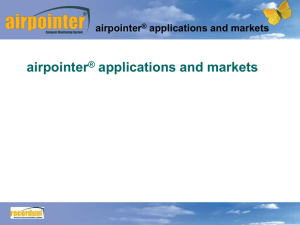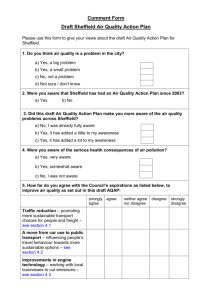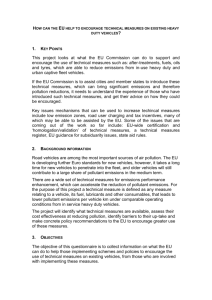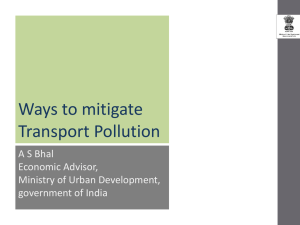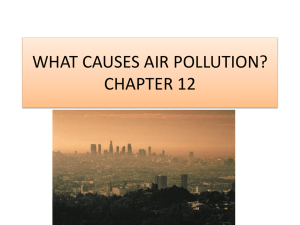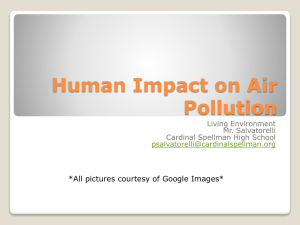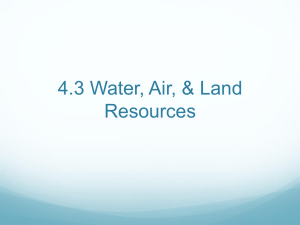California Air Quality: Governance - B. Croes
advertisement
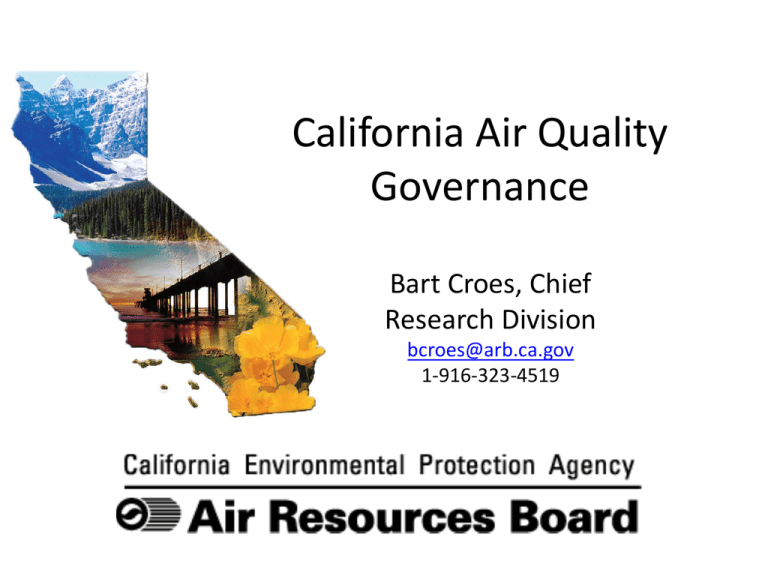
California Air Quality Governance Bart Croes, Chief Research Division bcroes@arb.ca.gov 1-916-323-4519 Growth Stages of a Culture of Environmental Management Recognizing the Need • Controls in the developed world came only after major environmental disasters o Donora, Pennsylvania o London o Los Angeles • Controls depend on social consensus Recognizing the Need Donora, Pennsylvania o October 26-31, 1948 o 20 people asphyxiated o >7,000 sickened by air pollution trapped in the Monongahela Valley London o o o o 1661 - John Evelyn: "Hellish and dismall cloud of sea-coale" 1800s - Smokey fog known as a "London particular” 1899 - London Smoke Abatement Society founded. December 1952 - Dense smoke-fog shrouds London for four days, Ministry of Health reports 4,075 more people died than expected under “normal” conditions Los Angeles in 1940s County air pollution control districts established 2.8 million vehicles Growth Stages of a Culture of Environmental Management Recognizing the Need Finding the Will • Government, business community and public must share commitment to be effective History of Air Pollution Law 1947 – California Air Pollution Control Act signed, established 35 local air pollution control districts 1959 – California begins developing ambient air standards and controls for motor vehicles 1961 – California establishes automotive emission control technology requirements 1963 – First Federal Clean Air Act 1967 – California Air Resources Board established to coordinate all state’s air pollution activities U.S. Clean Air Acts • • • • 1963: air quality criteria 1965: emission standards for motor vehicles 1967: air quality standards 1967: federal pre-emption of motor vehicles standards, EXCEPT California • 1970: Clean Air Act – – – – – enforceable air quality standards State Implementation Plans (SIPs) motor vehicle emission standards air toxics program citizen right to sue Growth Stages of a Culture of Environmental Management Recognizing the Need Finding the Will Developing Institutions to Facilitate and Enforce • Infrastructure must make compliance practical and evasion painful • Planning tools must tailor the program to local situations • Ongoing legal, public education and research efforts necessary to sustain a justifiable control program Developing Institutions to Facilitate and Enforce Air Pollution Control Control technologies are the least of the problem Technical Assistance • Permitting and compliance tracking • Certifying complying products (new vehicles, diesel filters, aftermarket parts, consumer products) Planning Assistance • Tools to track changing emissions, population, land use and economic activity • Technical and economic analysis skills o Appropriate technologies o Cost effectiveness o Technology penetration o Benefits estimation Developing Institutions to Facilitate and Enforce Air Pollution Control Maintain Authorities • Defend against legal challenges • Legislative expertise • Public education Research Program • Health and economic impacts of pollution • Benefits of controls • Technology feasibility demonstrations Regulatory structure • U.S. EPA – Sets National Ambient Air Quality Standards – Reviews, approves, enforces State Implementation Plans (SIPs) • California Air Resources Board – – – – – – Sets State Ambient Air Quality Standards Regulates mobile sources (except ships, aircraft, trains) Sets consumer products emission limits Establishes air toxics risk reduction Regulates greenhouse gases Sets regional transportation planning targets • Bureau of Automotive Repair – Runs passenger car inspection and maintenance program • Air quality management districts – Control stationary point sources – Control stationary area sources California Air Resources Board • The Board – 11 part-time members – Full-time chair – Service “at the pleasure of the Governor” – Appointment by Governor, approval by Senate • CARB – Staff of 1100, mostly engineers but also health researchers and economists – Annual budget of about $300 million – Headquarters in Sacramento (California capitol) – Motor vehicle programs in Los Angeles Extra slides 13 California Clean Air Act • First laws were enacted in 1947 • With exceptions, all who discharge air pollutants must first get a permit • All vehicles must adhere to California emission control requirements • Vehicular fuel must meet state requirements. • ARB has specific research mandates such as identifying toxic air contaminates and toxic hot spots Federal Clean Air Act (1963) • Regulates air emissions from area, stationary, and mobile sources • Sets National Ambient Air Quality Standards (NAAQS) to protect public health and the environment • Directs the states to develop state implementation plans (SIPs) Summary • California per capita emissions must be lowest in U.S. • Current air pollution health risk – PM2.5 >> ozone > air toxics • Emissions control focus – 1950s and 1960s: smoke – 1970s and 1980s: lead, SOX, hydrocarbons and NOX – 1990s to present: diesel PM and NOX, air toxics, GHG • Air quality improved 75-90% despite growth • On-road controls have greatest benefits • Benefits much greater than control costs 16

